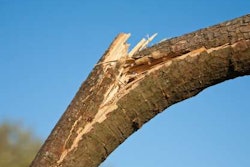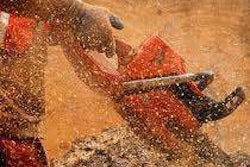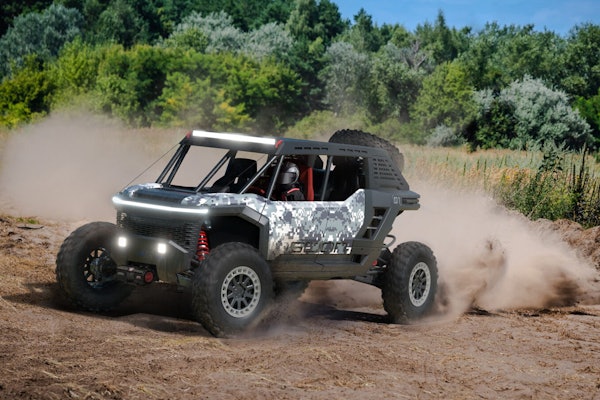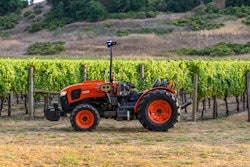“One of the most frustrating aspects of the lawn care industry is tires,” says Bruce Couch of Amerityre. “They are absolutely mandatory, but can be so frustrating when flat or low on air. The down time of a flat tire kills productivity, causing huge expenses due to inactivity.”
He’s right.
When everything is going well, you don’t think twice about your tires or tracks.
But when you’ve got a flat – or if you didn’t notice that one of your caster tires isn’t inflated properly and you’ve just scalped the lawn – tires are suddenly on your mind, and these aren’t cheerful thoughts.
What makes a good truck tire isn’t necessarily what makes a good tire for lawn and garden work – handling curves at high speeds is rarely necessary; reducing turf damage or avoiding black marks on pathways or driveways is vital.
Within landscaping applications, tires can – and should – differ. For example, trenchers or piggyback lift trucks require both stability and the ability to function well on soft terrain, so lug tires may be the best. Tires that are operated mostly on turf need features like rounded shoulders to minimize turf damage – particularly on turns. But tires that protect turf from damage may lack the stability for steep hills or challenging terrain.
Some tires are designed to try to bridge that gap – the Maxxis M9227 Turf Tech II, for example, has a tread designed to provide lateral traction to reduce slippage on hills and turf-friendly modified shoulders. But most tire purchases will require some thought on the types of usage the equipment will get most often.
Landscapers should look for a strong casing for a more stable tire, hi-ply rating for puncture resistance, and a deep tread for long life and to prevent slippage when on camber terrain, as well a tread designed to minimize turf damage, says Rob Perkins of Maxxis.
Couch suggests solid tires versus air-filled tires. “Solid urethane flat-free tires will make you more productive and save a lot of money,” Couch says. “This has been called the most significant break-through in tire technology in the past 40 years.”
If you work in muddy conditions, or are backing out of trenches or hauling heavy loads often you may need tracks. Steel tracks have a long life and good stability on most terrains, but can tear up asphalt, and can be time consuming to install and remove. Rubber tracks are easier to install, but some complain they slip off too easily, and they may not have the stability of steel tracks in some situations – heavy clay, for example.
Weigh the actual amount of time you spend in these conditions, to decide if going with tracks would be more cost effective than tires.
You can also buy “over the tire” skid steer tracks, like Loegerings’s VTS (Versatile Track System) – a rubber track undercarriage that bolts directly to your skid steer’s standard hubs. That gives you the option of removing and storing the tracks when the weather changes, and using both wheels and tracks on the same equipment. “One major advantage to doing that is operating costs,” says Tim Martin with Loegering. “If you don’t need tracks all the time, you can take our system off.”
Choosing the proper tires or tracks – and maintaining them – can save you the headache of down time or turf damage.









